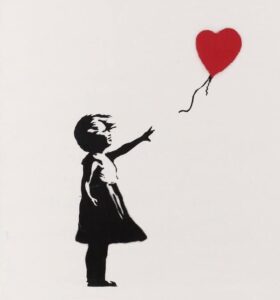A Journey into the Backrooms
5 min read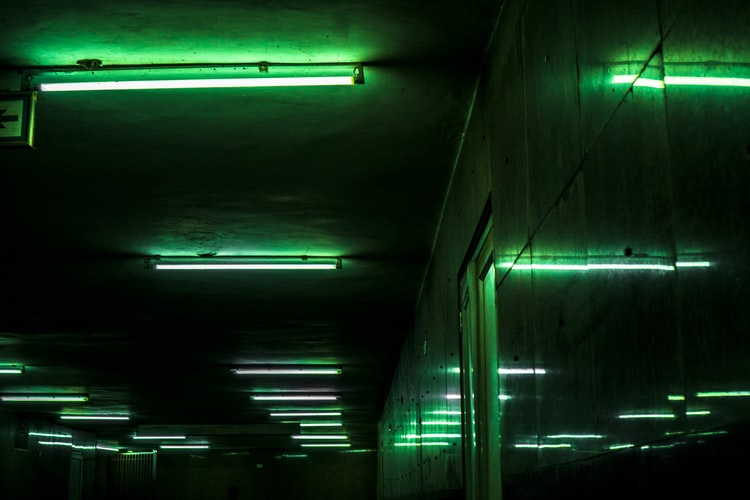
Inexplicable events usually form part of human existence. We claim to own the key of the reality surrounding us, to understand it with no doubts or to be able to give an explanation to what happens around us and inside ourselves. However, our rationality usually loses the control of some elements by submerging the mind into an uncertain and bewildering atmosphere. One of the best examples of such a confusion is the concept of Backrooms. Some of you may have already heard of it; others, instead, may have unintentionally found it. Undoubtedly, the characteristics of this phenomenon are strangely familiar to all of us. But what really are the Backrooms?
The theory of Backrooms originated on the ephemeral and immaterial world of the Internet. On 12th May 2019, a 4chan’s anonymous user published a creepy and yet weirdly familiar image, followed by this description:
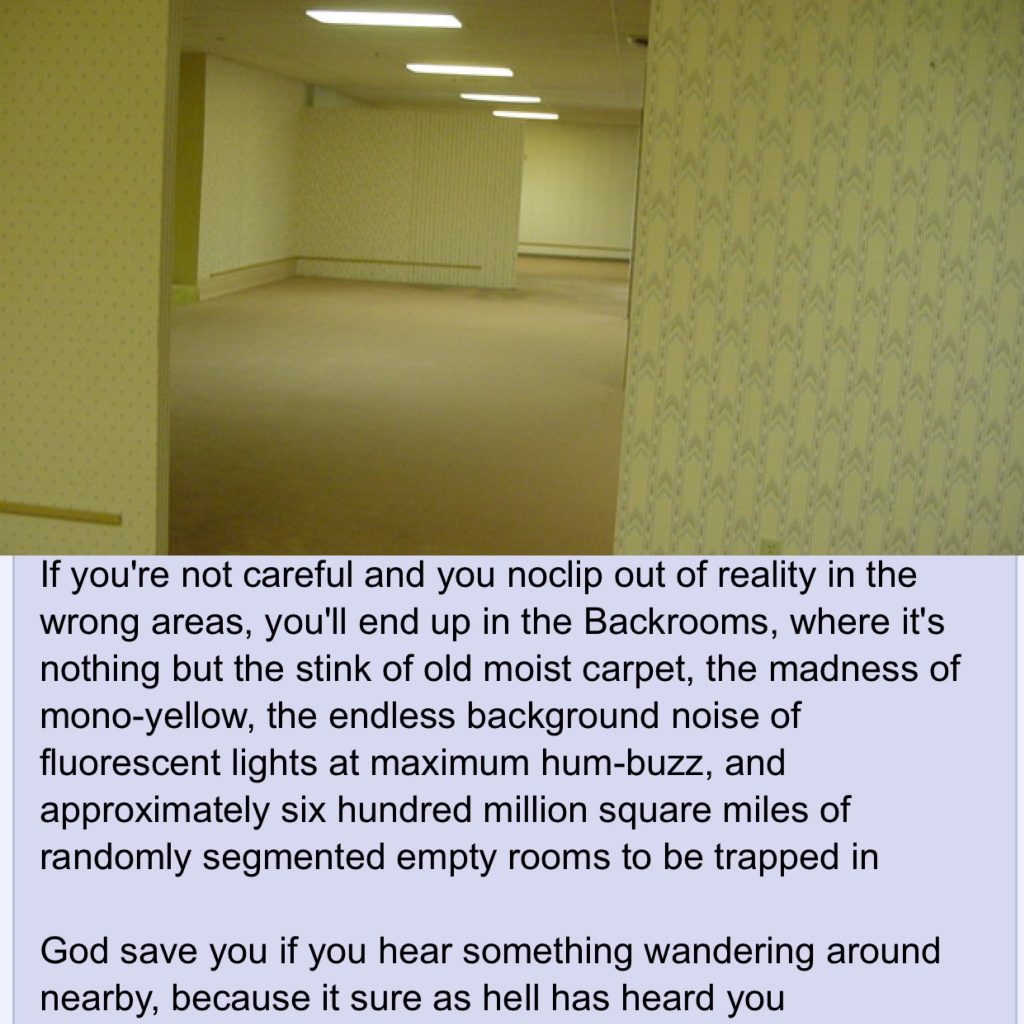
In the original post, you can notice the term “noclip” which usually relates to first-person videogames, and it refers to that ability of moving through walls, backgrounds or even characters due to glitches or cheat codes. It is not by chance that a great part of Backrooms’s aesthetic comes from videogames. As a gamer suddently ends up alone in empty spaces without realizing it, in the same way you can unexpectedly enter a Backroom. Many are the videogames that perfectly embody the essence of Backrooms, such as The Stanley Parable, Portal or Superliminal.
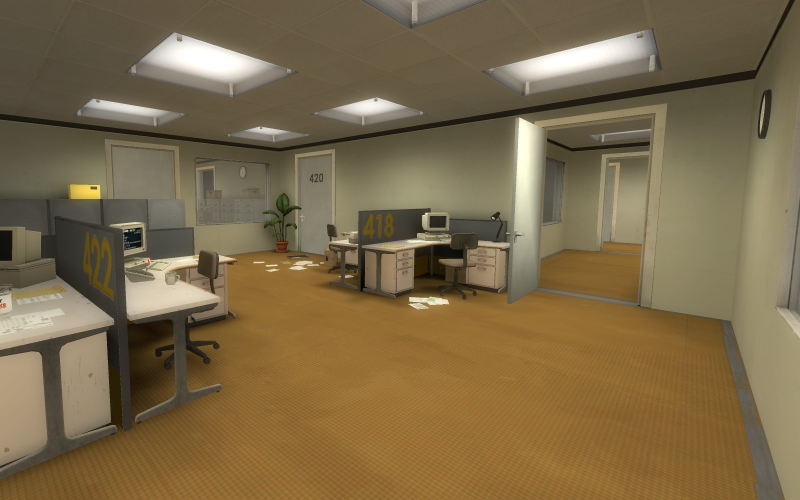
Backrooms are places, or better say “non-places” considering their recurrent nature, which go beyond the traditional notions of time and space. Countless hallways, identical rooms and the absence of windows absorb those who arrive into an alienating condition, where is likely to lose the regular perception of space and time.
According to the theory, there are three different levels inside the Backrooms. It should be remembered that we are referring to an abstract and undefined concept, so its followers do not unanimously agree on the exact amount of levels. Some of them claim that only three levels compose the Backrooms, others think that levels are probably a hundred and there are even those who believe in an infinite quantity of levels. The three-level theory is, however, the most shared throughout the fandom. The first level (Level 0) corresponds to the 4chan’s post that we have previously seen: a maze of similar, quiet and motionless rooms, where the absence of furniture catches the eye.
Through elevators or stairs, one can reach Level 1, that is basically like the previous one except for some creepier details, such as cracks on walls, mold and buzzling lights alternated by moment of complete darkness. If sounds were almost absent in the previous level, it is now possible to hear screeches, mechanical sounds and even screams far away.
Suddenly you reach Level 2, without having taken any stairs or elevators. On this level, the scenario dramatically changes since the subject starts being surrounded by a dark and eerie setting. This level takes the form of a long and barely illuminated tunnel with air ducts and pipes lining the walls. An increasing terror overwhelms those who cross it, and the more you go ahead, the more unbearable the heat and the sound of machines become. Something is hiding through the shadow, you can feel it, and the only urge is to escape. From this level you may suddenly exit as it occurred in the previous one. The next stop can be Level 3 and the following levels or, in the worst-case scenario, one can unconsciously return to Level 0 by restarting everything again. An alienating endless cycle.
What is the meaning of all this, though? Where are these Backrooms? Do they really exist or are just a fictional creation? The function of these places is mostly allegorical. They are related to the metaphorical representation of specific events of human existence, so they have no tangibility in the real world. Nonetheless, we can all reach them while dreaming, which would explain why many people find the elements of Level Zero so familiar. They claim, in fact, to have seen similar places during their unconscious experiences.
But there is a specific event that Backrooms seem to epitomize accurately: sleep paralysis. It could happen because of a contrast between mind and body, where the former is awake while the latter is basically asleep. Such a divergence may cause sinister hallucinations in which subjects perceive the presence of someone in the room and those who are affected by this disorder can start to panic when they realize to be mentally conscious but physically petrified.
According to some theories, Backrooms would also be a metaphor for the progressive disintegration of the mind caused by Alzheimer. As in the Backrooms’s levels reality becomes more and more unclear and unrecognizable, also a mind affected by Alzheimer may undergo the same dreadful process of slow decomposition of reality, memories and self-awareness.
Regarding this, I would like to mention one of the most interesting and upsetting musical projects of the recent years: Everywhere at the End of Time (2016 – 2019) by the British artist Leyland James Kirby, a.k.a. The Caretaker. This album is a monumental work that tries to represent through music the state of mind caused by Alzheimer and other types of dementia. Melodies gradually degenerate while passing from quiet, melancholic tunes to disturbing, disconnected and almost cacophonic ambient music. The Caretaker attempts to place the audience in dementia patients’ shoes, so as to understand the mental disorientation caused by this neurodegenerative disease.
Among the several samples used by The Caretaker stand out some ballroom songs from Shining (1977), the Stanley Kubrick’s masterpiece. Such a choice is not accidental, especially if we analyse it through Backrooms’s perspective. In fact, the Overlook Hotel’s iconic hallways that seem to recur inside a suspended time are considered by Backrooms’s community as one of the best examples of that creepy circumstance. The places that work as unsurpassable limbos are a narrative commonplace, especially in Cinema. Besides Shining, there are many other movies that applied such settings to their plots, such as the Black Lodge in Twin Peaks (1990), the interminable baroque rooms in Last Year in Marienbad (1961) or those surreal and alienating places in the recent I’m Thinking of Ending Things (2020).
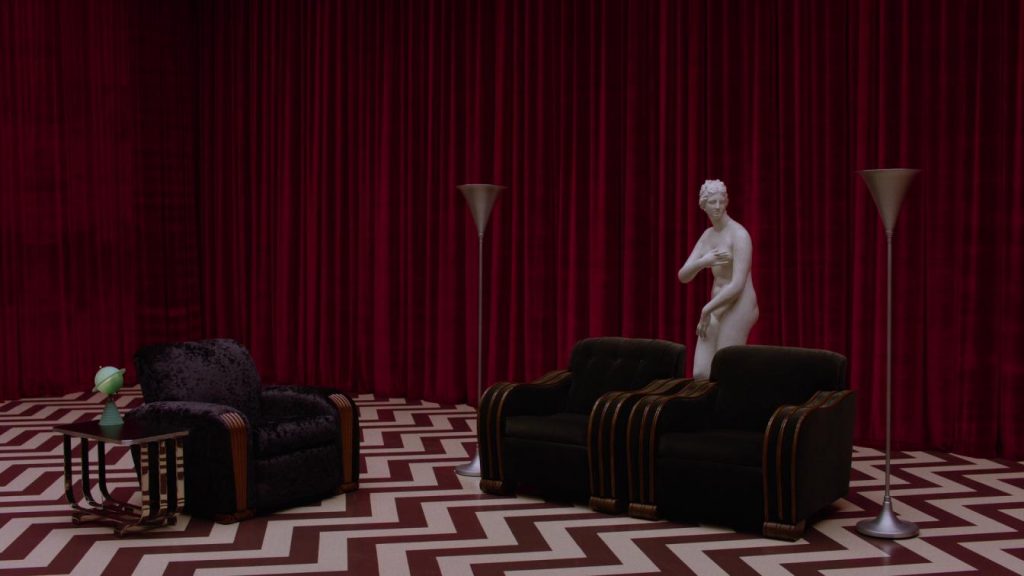
Although Backrooms’s phenomenon is recent and quite disturbing, we cannot deny how frequently its features recur in traditional narrative and common imagination. The idea of a limbo place transcending the rules of time and space has a huge role in representing the metaphysics of human existence. Each of us can experience moments of bewilderment or stagnation throughout life, as if we were stuck inside an undefined waiting room. You can choose to keep on walking through doors, walls and levels or standing still, but only the inevitable passing of time will tell you if you are destined to a bright way out or, on the opposite, to another empty room, doomed to live in an eternal cycle of redemption or witnessing the slow crumbling of your own perception.

Sono laureata in Lingue e Letterature Straniere a Venezia, città da cui ho imparato l’attenzione ai dettagli nascosti dell’esistenza, nonché l’elogio della lentezza (come direbbe Kundera). Ho sempre visto la letteratura, l’arte, la musica e il cinema come i cardini fondamentali della mia vita, le cui correnti mi hanno reso la persona che sono oggi.




